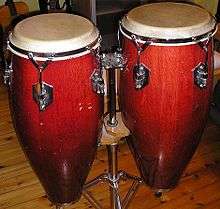Gilberto
Gilberto is the romance version of the Latinized form of Gilbert, used in Italian, Portuguese and Spanish languages. In Galician, it's spelled Xilberto or Xilberte. It derives from the Germanic words gisel (meaning pledge or hostage) and beraht (meaning bright). It can be used as a given name or surname.
Gilberto may refer to:
Given name

Gilberto da Silva Melo
Gilberto da Silva Melo, (born 25 April 1976 in Rio de Janeiro), more commonly known as Gilberto, is a retired Brazilian professional footballer. He has played at left back for the majority of his career. Gilberto's brothers Nildeson and Nélio are also footballers.
Club career
Having started his career in his native Brazil, playing for América-RJ, Flamengo and Cruzeiro, then he moved for one season to Italy club Internazionale. However, he soon left for Vasco da Gama. He also played with Grêmio and São Caetano.
Hertha BSC
Gilberto returned to Europe in 2004 with Hertha BSC.
He played four years in this club and was for several years one of the best left defenders of the Bundesliga. Gilberto combined a successful defense with permanent participation in the attacks from the left winger position. He had fast speed and good shot, and often threatened the goal, scoring six goals at the first season as a left back. In the first two seasons of his Berlin career Hertha finished fourth in 2004–05 and the following season finished sixth. In the 2004–05 season, Gilberto was named the best left back of the Bundesliga.

Conga
The conga, also known as tumbadora, is a tall, narrow, single-headed drum from Cuba. Congas are staved like barrels and classified into three types: quinto (lead drum, highest), tres dos or tres golpes (middle), and tumba or salidor (lowest). Congas are traditionally used in Afro-Cuban genres such as conga and rumba, although they are now very common in some other forms of Latin music, including descarga, Afro-Cuban jazz, salsa, songo, merengue and Latin rock.
Characteristics
Most modern congas have a staved wooden or fiberglass shell, and a screw-tensioned drumhead. They are usually played in sets of two to four with the fingers and palms of the hand. Typical congas stand approximately 75 centimetres (30 in) from the bottom of the shell to the head. The drums may be played while seated. Alternatively, the drums may be mounted on a rack or stand to permit the player to play while standing. While they originated in Cuba, their incorporation into the popular and folk music of other countries has resulted in diversification of terminology for the instruments and the players. In Cuba, congas are called tumbadoras.

Conga (music)
The term conga refers to the music groups within Cuban comparsas and the music they play. Comparsas are large ensembles of musicians, singers and dancers with a specific costume and choreography which perform in the street carnivals of Santiago de Cuba and Havana.
The instrumentation differs between congas santiagueras and congas habaneras. Congas santiagueras include the corneta china (Chinese cornet), which is an adaptation of the Cantonese suona introduced in Oriente in 1915, and its percussion section comprises bocúes (similar to African ashiko drums), the quinto (highest pitched conga drum), galletas and the pilón, as well as brakes which are struck with metal sticks.Congas habaneras lack the corneta china but include trumpets, trombones and saxophones, and they have a different set of percussion instruments: redoblantes (side drums), bombos (bass drums), quinto, tumbadora (the lowest pitched conga drum), and metallic idiophones such as cowbells, spoons, frying pans and rims.

Conga line
The conga line is a novelty dance that was derived from the Cuban carnival dance of the same name and became popular in the US in the 1930s and 1950s. The dancers form a long, processing line, which would usually turn into a circle. It has three shuffle steps on the beat, followed by a kick that is slightly ahead of the fourth beat. The conga, a term mistakenly believed to be derived from the African region of Congo, is both a lyrical and danceable genre, rooted in the music of carnival troupes or comparsas.
Origin
The conga dance was originally a street dance in Cuba. The style was appropriated by politicians during the early years of republic in an attempt to appeal to the masses before election. During the Machado dictatorship in Cuba, Havana citizens were forbidden to dance the conga, because rival groups would work themselves to high excitement and explode into street fighting. When Fulgencio Batista became president in the 1940s, he permitted people to dance congas during elections, but a police permit was required.
Podcasts:

